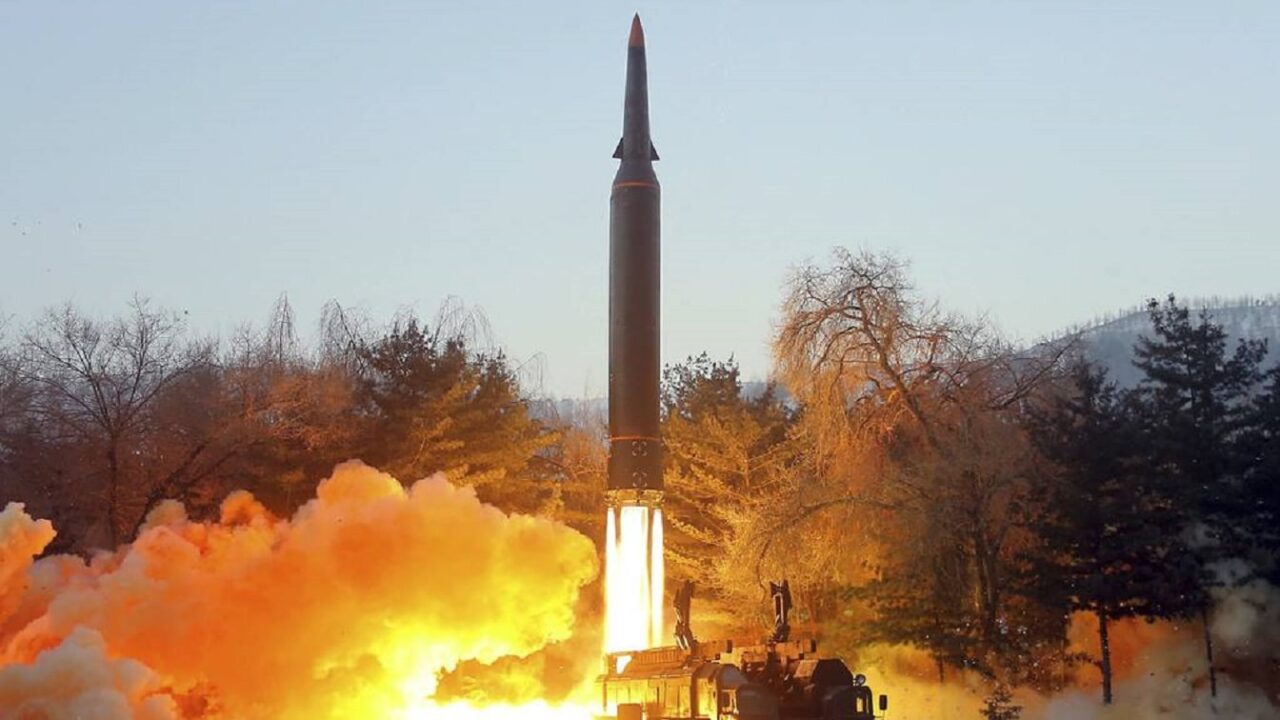What is North Korea Planning? On Monday, the United States and South Korea began one of their largest combined military air drills to date. More than 240 warplanes staged mock attacks 24 hours a day for the better part of this week. Dubbed “Vigilant Storm 23,” the training event, which runs through Friday, will include about 1,600 sorties, the highest ever for the annual exercise.

North Korean leader Kim Jong Un chairs a Worker’s Party meeting on coronavirus disease (COVID-19) outbreak response in this undated photo released by North Korea’s Korean Central News Agency (KCNA) on May 12, 2022. KCNA via REUTERS.
Designed to practice wartime missions, roles, and tasks in an effort to enhance the combat-readiness and survivability of U.S. Air Force and Republic of Korea Air Force (ROKAF) aircraft, Vigilant Storm will include variants of the F-35 stealth fighter from both the United States and South Korea.
Thousands of service members from ROKAF, the U.S. Air Force, U.S. Marine Corps, U.S. Navy, and U.S. Army are participating in this training. Aircraft are flying out of several ROKAF bases, as well as Osan and Kunsan Air Bases and Camp Humphreys.
Marine Corps F-35Bs are working alongside South Korean F-35A and F-15 jets. They will be joined by U.S. Navy EA-18 electronic warfare and Air Force U-2 reconnaissance aircraft. The Royal Australian Air Force’s 33 Squadron has also deployed a KC-30A air refueler to the Republic of Korea. It will train with ROKAF and U.S. Air Force aircraft.
“(South Korea) and U.S. Air Forces will work together with the joint services to perform major air missions such as close air support, defensive counter air, and emergency air operations 24 hours a day during the training period,” the U.S. Air Force announced. “Support forces on the ground will also train their base defense procedures and survivability in case of attack.”
Previously called the Combined Flying Training Event, this annual exercise takes several months of planning and preparation with units throughout the Korean peninsula and beyond. This year’s event will strengthen the operational and tactical capabilities of combined air operations and enhance the strong combined defense posture.
North Korea’s Response
Pyongyang was quick to condemn the week-long drills and demanded that the U.S. and South Korea stop the large-scale military exercises. North Korea called them an unnecessary provocation, and warned that it could result in “more powerful follow-up measures” by the North Korean military.
“The situation in the Korean Peninsula and its vicinity has entered the serious confrontation phase of power again due to the ceaseless and reckless military moves of the U.S. and South Korea,” North Korea’s Foreign Ministry said in a statement carried on the state-run KCNA news agency.
The Ministry added that it was “ready to take all necessary measures for defending its sovereignty, people’s security and territorial integrity from outside military threats. If the U.S. continuously persists in grave military provocations, the DPRK will take into account more powerful follow-up measures.”
Washington and Seoul believe Pyongyang could resume testing of its nuclear weapons for the first time since 2017, and Vigilant Storm is part of the allies’ efforts to deter North Korea.
Just last Friday, South Korean troops finished the 12-day Hoguk 22 field exercises, which featured mock amphibious landings and river crossings, including some drills with U.S. forces.
A Senior Editor for 1945, Peter Suciu is a Michigan-based writer. He has contributed to more than four dozen magazines, newspapers, and websites with over 3,000 published pieces over a twenty-year career in journalism. He regularly writes about military hardware, firearms history, cybersecurity, and international affairs. Peter is also a Contributing Writer for Forbes. You can follow him on Twitter: @PeterSuciu.

